Eight Black Horses Read online
Eight Black Horses
Ed Mcbain
EIGHT BLACK
HORSES
[An 87th Precinct Novel]
Ed McBain
Scanned & Proofed By MadMaxAU
* * * *
CHAPTER ONE
The lady was extraordinarily naked.
That is to say, she looked extraordinarily naked because she was so very white. There are, after all, no degrees of nakedness. You are either clothed or you are unclothed. The lady was very definitely unclothed, but all the detectives gathered around her agreed that she looked more naked than any naked person they had ever seen in their collective lives.
‘It’s because she’s so white,’ Monoghan said.
‘Looks like an albino,’ Monroe said.
Monoghan and Monroe were Homicide detectives. They had been called in the moment it was ascertained that the lady lying on the withering leaves off the park path was indeed dead. It did not require much detection to determine that she was dead. The foot patrolman had known she was dead the moment he saw the bullet hole at the base of her skull. When he’d got on the walkie-talkie to the desk sergeant at the Eight-Seven, he had, in fact, said, ‘Sarge, I got a female stiff here in the park.’ Carella and Brown knew the lady was dead, too. That was why they’d called back to the station house to ask Sergeant Murchison to inform Homicide.
None of the men were wearing overcoats.
After the recent rain the October weather had turned mild enough to permit shorts and sandals, which many of the curious onlookers behind the Crime Scene signs and barricades were, in fact, wearing. In contrast, Monoghan and Monroe were both wearing black suits, white shirts, blue lies, and gray fedoras. They looked like chunky undertakers waiting outside a funeral home to greet mourners.
Arthur Brown was wearing a tan tropical-weight suit. Steve Carella was wearing blue slacks and a darker blue sports shirt rolled up at the cuffs. They could have been two ordinary citizens, a pair of married men—which they were—who had strolled into the park on a lovely Tuesday morning to get away from the wife and kids and discuss football scores.
The gathering crowd knew Brown was a cop, though, because he looked mean. Scowling, he stared down at the body on the leaves. The temperature when he’d awakened this morning was sixty-eight degrees Fahrenheit—or twenty degrees Celsius, as the damn forecasters insisted on translating and so he’d put on the lightweight tan suit. The suit made him look very brown, which in fact he was. He did not like to think of himself as a black man, which—in today’s nomenclature—he also was. He did not know any black men who were really black. Black was an absence of color, wasn’t it? He had always thought of himself as ‘colored,’ in fact, until it became almost mandatory for a black man to start thinking of himself as black. If you didn’t think of yourself as black, you were betraying the race. Black power. Bullshit, What Brown had was brown power, all six feet four inches and two hundred and twenty pounds of him. The crowd figured he was a cop because anybody so mean-looking, if he was standing with a bunch of cops and he wasn’t wearing handcuffs, had to be a cop himself. Also there was a little plastic ID card clipped to the pocket of his suit.
The crowd, what with the World Series still fresh in their minds, thought Carella looked like a baseball player. They deducted this because of his athletic stance and his long slender body. They also thought he looked a little Chinese; that was because his brown eyes slanted slightly downward—or was that Japanese? They doubted there were very many Caucasian Chinese baseball players in America, though, so they figured he had to be a cop, too. A clue to this was the plastic ID card pinned to his shirt pocket, just like the one the mean-looking black guy was wearing. Both men were wearing holstered pistols on their hips, another clue to their identity, though in this city—like in the olden days of the Wild West—you sometimes got cheap street thieves running around with guns right in the open.
Carella and Brown liked being partnered together.
They felt it was effective against the bad guys.
The bad guys took one look at Carella, and they figured this one is the pushover, it’s the bad-ass nigger you gotta watch out for. Whenever they were partnered together, Carella and Brown played Mutt and Jeff to the hilt. Carella played Mr. Clean—‘Golly, Artie, it don’t look to me like this nice young man here even knows what marijuana is!’ Brown played Big Bad Leroy, born in a ghetto garbage can, shooting dope since he was six years old, done time at Castleview upstate, seen the light afterward and became a cop by way of penance for his formerly evil life. Mean, though, still as mean as a hooker’s snatch. ‘You lyin’ little punk, I’m gonna kill you right here on the spot, save the slate a ‘lectric bill. Get your hands off me, Steve, I’m gonna throw this man off the roof!’ Mean, oh man, real bad-ass. Big Bad Leroy. It worked nicely.
The sky overhead was as blue as a newborn baby’s eyes.
The leaves in the trees lining the path were yellow and brown and red and orange.
The leaves under the dead lady were yellow and red.
The red was caused by the wound at the base of her skull.
‘This city,’ Monroe said, ‘you can carry a dead person in a park, she’s got a bullet hole in her head and she’s starkers, nobody bats an eyelash.’
Carella was looking down at the lifeless white body on the blood-stained leaves. They always look all angles, he thought. The thought was short lived, accompanied by a brief flicker of pain in his eyes. In solitude, on too many occasions, he had sat and wondered why the geometry of death left only angles.
‘Let’s roll her over,’ Monoghan said. ‘See she’s wearing some ID pinned to her chest.’
He knew they could not roll her over until the medical examiner got there. He just enjoyed hassling the detectives from the Eight-Seven. That was one of life’s little joys. The bulls on this squad up here, they took things too serious. In Monoghan’s universe a stiff was a stiff, period. Dressed, naked, stabbed, shot, strangled, incinerated, poleaxed, whatever, it was still only a corpse, and a corpse meant paperwork. In this city, though, the appearance of Homicide cops at the scene of a crime was mandatory. The case officially belonged to the detectives who caught the squeal, but the Homicide Division—like a nagging backseat driver—constantly watched over their shoulders, demanding progress reports at every turn in the road.
‘What do you say?’ Monoghan asked, not sure Carella had heard him. ‘We roll her over, see what she looks like from the front.’
Carella didn’t bother answering him. His eyes were scanning the leaves for any sign of a bullet or a spent cartridge case.
‘How old you think she is?’ Monroe asked. ‘Judging from her ass.’
‘That’s a twenty-seven-year-old ass,’ Monoghan said.
‘She’s got a beauty mark on her right cheek,’ Monroe said.
‘Good firm ass, she’s got there,’ Monoghan said.
‘I had a case once,’ Monroe said, ‘this guy died from a broken bottle shoved up his ass.’
‘Yeah, I remember that one,’ Monoghan said.
‘Hemorrhaged to death,’ Monroe said.
‘His boyfriend done it, right?’
‘Yeah, his boyfriend.’
Both men looked at the woman’s buttocks.
‘Twenty-seven years old, I’ll give you two to one,’ Monoghan said.
‘The legs look twenty-seven, too,’ Monroe said.
Brown looked up at the sky.
Not a cloud in it.
He took in a deep breath of fresh air.
‘Morning gentlemen,’ a voice said, and they turned to look up the path where a man in his late fifties, wearing dark blue slacks, a seersucker jacket, a pink shirt, and a blue polka dot tie, was approaching. He was carrying a black satche
l in his right hand. ‘Beautiful day, isn’t it?’ he said. ‘This the body?’
‘No, the body’s up in the trees there,’ Monroe said.
‘It’s an Indian body,’ Monoghan said. ‘They put them up in the trees.’
The assistant medical examiner looked up into the tree-tops. Leaves fell everywhere around them, twisting on the air.
‘We’ve had three naked bodies this week,’ the M.E. said to no one and then knelt over the dead woman.
‘Where’d you hear that?’ Monroe asked Monoghan.
‘Where’d I hear what?’
‘That Indians put dead bodies up in the trees.’
‘It’s a fact,’ Monoghan said.
‘Does Muhammad Gandhi know that?’
‘I’m talkin’ about American Indians,’ Monoghan said. ‘Somebody dies, they put the body up in the trees.’
‘What for?’
‘Who the hell knows?’
The M.E. had rolled the body over. He was holding a stethoscope to the dead woman’s chest.
‘Whattya think, Doc?’ Monroe asked. ‘She dead enough for you?’
‘Quiet, please,’ the M.E. said.
‘He thinks he’s gonna get a heartbeat,’ Monoghan said.
The men fell silent. There was only the sound of the flutter of leaves on the sunlit air. The dead woman’s eyes were opened wide. They were as blue as the sky above. Her hair was as golden as the leaves beneath her. She appeared to be in her mid-thirties, a not unattractive woman except for the gaping exit wound in the hollow of her throat. Carella wondered if she’d ever been out in the sun, she was so white.
‘She’s dead, all right,’ the M.E. said, rising and putting his stethoscope back into his satchel. ‘You can put it down as a gunshot wound.’
‘While you’re here,’ Monroe said, ‘I been having trouble with my throat. You wanna take a look at it?’
* * * *
The next letter—well, it wasn’t really a letter.
The next message—it wasn’t that, either, not unless it meant something.
The next piece of folded paper with, well, pictures on it was waiting for them when they got back to the station house. It had arrived, Sergeant Murchison told them, in a plain white envelope with no return address on it. The postmark over the stamp indicated that the letter had been mailed here in the city on the twenty-fourth, yesterday. That spoke well for the Post Office Department; in this city it sometimes took four days for a letter to travel three blocks crosstown.
They did not know if this one was also from the Deaf Man.
That’s because there was no ear on it.
They’d been fairly certain that the first letter—message, piece of folded paper, whatever the hell—had come from the Deaf Man. That was because they were all expert sleuths, and when their eyes fell upon a deaf ear, they recognized it at once.
The first—communication, they guessed it was—had arrived on Saturday, October 22. It had been addressed to Detective Stephen Louis Carella at the 87th Precinct, and it looked like this:
Well, everybody on the squad knew that those things prancing across the top of the page were horses. They also knew that there were eight of them, and they were black, and if you put all of that together, you got eight black horses. Which meant nothing, of course. Which, of course, if the Deaf Man had sent this thing to them, meant something. Because the Deaf Man often sent communications that looked as if they meant nothing until you figured them out and then they meant something. One thing they had learned about the Deaf Man over the years was that he always played the game fair. They didn’t know why he played the game fair, but then again they rarely understood the workings of the criminal mind, especially the master criminal mind. In their minds the Deaf Man was a master criminal. That was why he played the game fair and sent communications that looked as if they meant nothing when actually they meant something.
They figured it was the Deaf Man because of the ear with the bar across it.
Most people do not have bars across their ears.
In international sign language, if you saw a cigarette with a bar across it, it meant no smoking. If you saw the capital letter P with a bar across it, it meant no parking. An ear with a bar across it could have meant no ear, but they suspected instead that it meant no hearing, which further meant deaf, and since the ear wasn’t a delicately shaped shell-like thing but instead a very masculine-looking ear (unless it was the ear of a female wrestler), they concluded that the picture of the ear with the bar across it meant DEAF MAN.
This conclusion was unsettling.
They did not want to believe that the Deaf Man was back in their midst.
They had posted the Deaf Man’s message on the bulletin board and hoped it would go away. But this was Tuesday morning, October 25, and it had not gone away. Instead, there was a second envelope addressed personally to Carella. When he opened it, there was another single white sheet of folded paper in it. He unfolded the paper. He looked at it. This time there was no ear with a bar across it. Instead, there was—or were, as the case actually was:
Meyer Meyer was looking over Carella’s shoulder.
He was wearing lightweight slacks and a short-sleeved polo shirt with a crocodile over where the pocket would have been if there’d been a pocket on the shirt. Most polo shirts did not have pockets these days. Meyer didn’t mind that, now that he’d given up smoking. The shirt was a shade darker than his blue eyes. The trousers were a sort of cream-colored polyester, as pale as his bald pate. His wife, Sarah, had told him this morning that he looked tacky wearing summer clothes to work when it was already the end of October. He’d commented, wittily he thought, that maybe in his head it was October, but in the rest of him it was still June. Sarah suspected he was making a sexual remark.
‘Is it him again?’ he asked.
‘I don’t know,’ Carella said.
‘So what are those supposed to be, anyway?’ Meyer said.
‘Radios, I guess,’ Carella said.
‘Walkie-talkies, looks more like,’ Brown said.
‘Five walkie-talkies,’ Carella said.
‘No ear, though.’
‘No ear.’
‘Maybe it isn’t him,’ Carella said.
‘From your lips to God’s ear,’ Meyer said.
‘Five walkie-talkies,’ Brown said, and shook his head.
‘He’s giving us arithmetic lessons,’ Meyer said. ‘Eight, five...’
‘He’s jerkin’ us off,’ Brown said. ‘Eight black horses, five walkie-talkies, those things don’t have anything at all to do with each other.’
* * * *
The trouble with naked dead bodies is that they are not wearing clothes.
Clothing is an aid to identification.
Clothing is also helpful in determining who the perpetrator or perpetrators may have been. Hair clings to clothing. Stains cling to clothing. Bread crumbs, iron filings, sawdust, face powder, flea powder, gunpowder, all sorts of juicy informational tidbits cling to clothing, making a laboratory technician’s life a bit easier. Nothing much clings to a dead body. Unless it was raped, in which case there are often wild pubic hairs tangled in the victim’s crotch or traces of semen to be found in the vagina.
According to the preliminary report of the medical examiner’s office, the lady in the park had not been raped—either before her death or after it, a not uncommon occurrence in this civilized city.
She had been shot in the back of the head, gangland style.
A single bullet had done the job, but there were no spent cartridge cases or bullets at the scene. An automatic weapon ejects cartridge cases when it is fired. A revolver retains the spent cartridge cases in its cylinder. But whenever type of pistol had been used, if the lady had been shot and killed m Grover Park, there would have been a spent bullet somewhere in the vicinity. The exit wound in her throat told them that. They could find no bullet. Which indicated to them that the lady had been shot elsewhere and only later transported to the park.
It is a myth that the Identification Section of any cosmopolitan police department can immediately identify anyone merely by checking his or her fingerprints against what is known as the base file. The base file in this city was divided into two sections, the largest of which—occupying an entire floor of the Headquarters Building downtown on High Street—was itself subdivided into two sections, one devoted exclusively to maintaining an up-to-date fingerprint record of anyone charged with or convicted of a felony or a misdemeanor, the other composed of latent fingerprints taken at the scene of a crime. The overall section was called the Criminal Section of the Identification Section, or the CSIS, bastardized in police jargon to just plain ‘Sissies.’ The Sissies file devoted to known criminals was called the A-file, and the file holding latents was called the B-file.

 Alice in Jeopardy: A Novel
Alice in Jeopardy: A Novel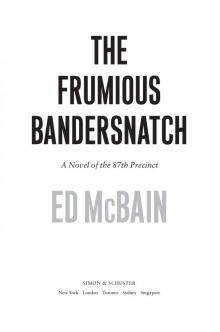 The Frumious Bandersnatch
The Frumious Bandersnatch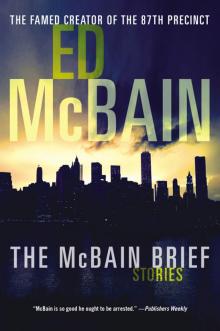 The McBain Brief
The McBain Brief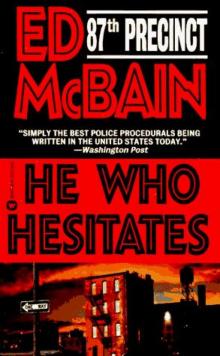 He Who Hesitates
He Who Hesitates Mischief
Mischief Fat Ollie's Book: A Novel of the 87th Precinct
Fat Ollie's Book: A Novel of the 87th Precinct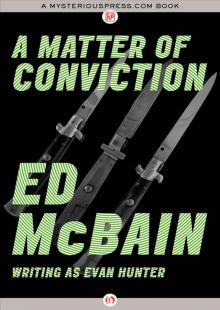 A Matter of Conviction
A Matter of Conviction Ice
Ice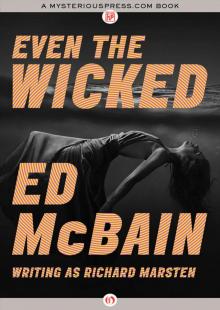 Even the Wicked
Even the Wicked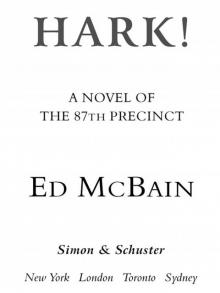 Hark!
Hark!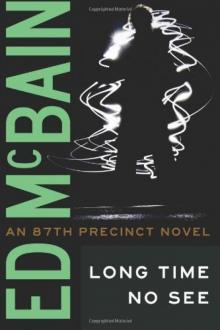 Long Time No See
Long Time No See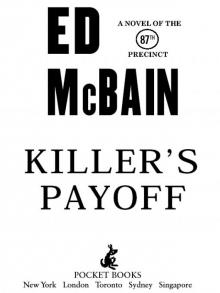 Killer's Payoff
Killer's Payoff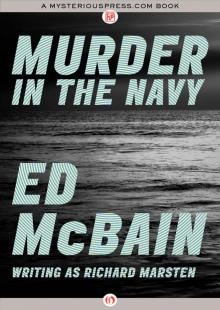 Murder in the Navy
Murder in the Navy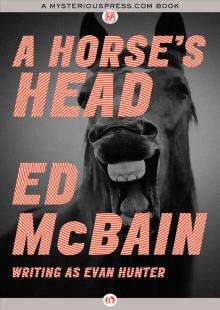 A Horse’s Head
A Horse’s Head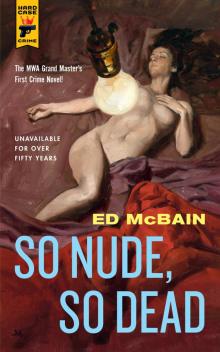 So Nude, So Dead
So Nude, So Dead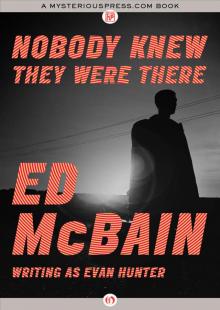 Nobody Knew They Were There
Nobody Knew They Were There Alice in Jeopardy
Alice in Jeopardy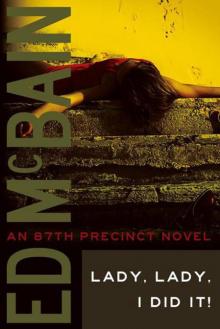 87P14-Lady, Lady, I Did It!
87P14-Lady, Lady, I Did It!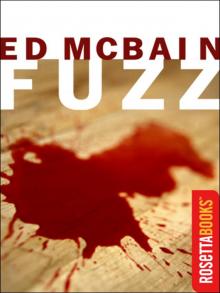 Fuzz
Fuzz Jack and the Beanstalk (Matthew Hope)
Jack and the Beanstalk (Matthew Hope)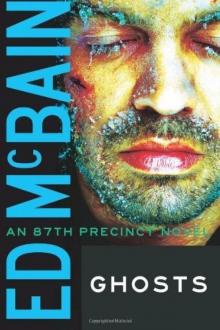 Ghosts
Ghosts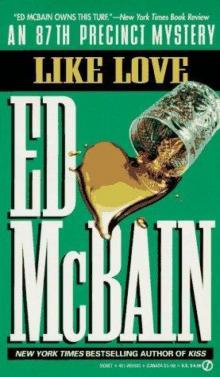 Like Love
Like Love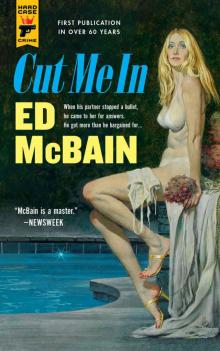 Cut Me In (Hard Case Crime)
Cut Me In (Hard Case Crime)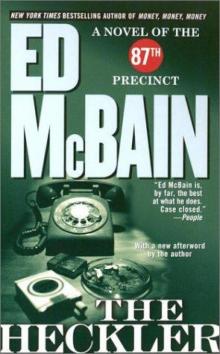 The Heckler
The Heckler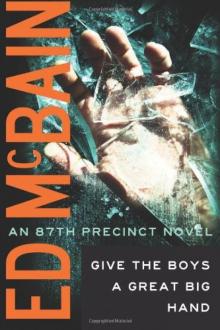 Give the Boys a Great Big Hand
Give the Boys a Great Big Hand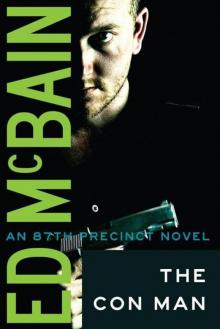 The Con Man
The Con Man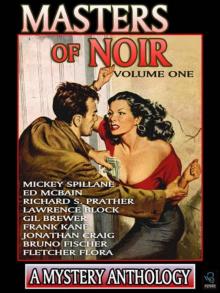 Masters of Noir: Volume One
Masters of Noir: Volume One Money, Money, Money
Money, Money, Money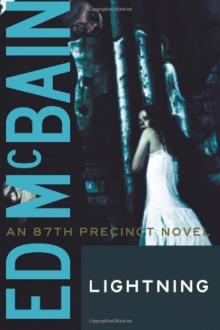 Lightning
Lightning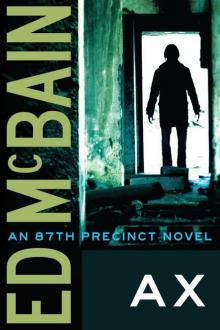 Ax
Ax The Spiked Heel
The Spiked Heel Scimitar
Scimitar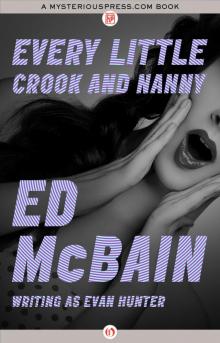 Every Little Crook and Nanny
Every Little Crook and Nanny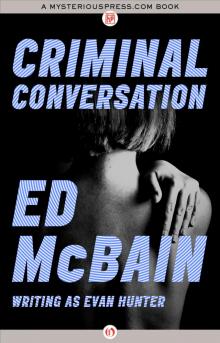 Criminal Conversation
Criminal Conversation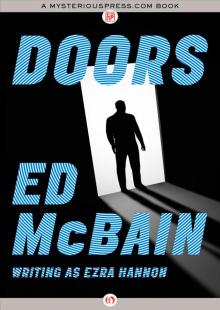 Doors
Doors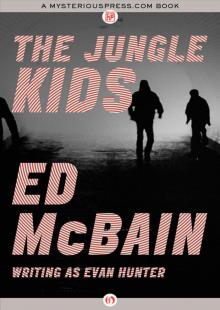 The Jungle Kids
The Jungle Kids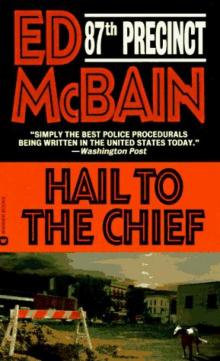 Hail to the Chief
Hail to the Chief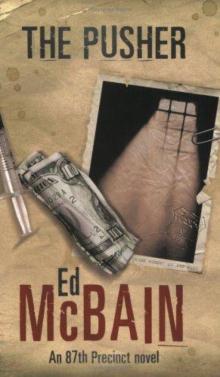 Pusher
Pusher Killer's Choice
Killer's Choice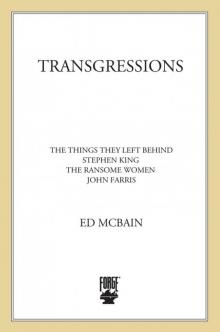 Transgressions Volume 2
Transgressions Volume 2 King's Ransom
King's Ransom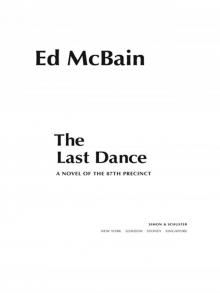 The Last Dance
The Last Dance Fiddlers
Fiddlers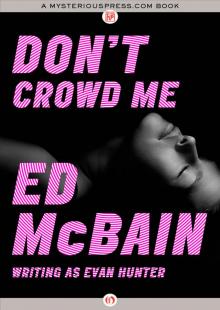 Don’t Crowd Me
Don’t Crowd Me Cinderella
Cinderella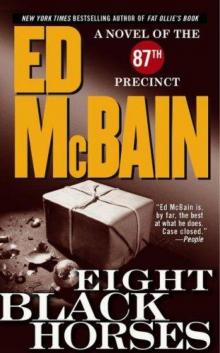 Eight Black Horses
Eight Black Horses Big Man
Big Man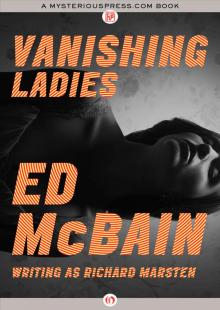 Vanishing Ladies
Vanishing Ladies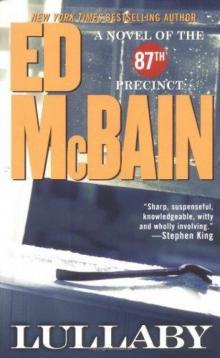 Lullaby
Lullaby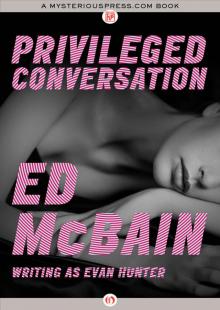 Privileged Conversation
Privileged Conversation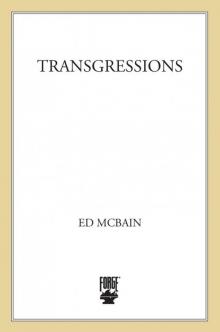 Transgressions, Volume 4
Transgressions, Volume 4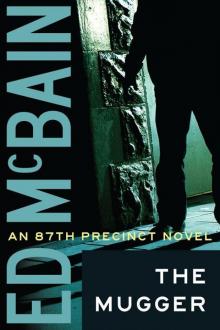 The Mugger
The Mugger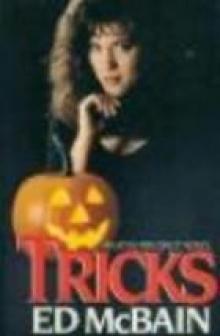 Tricks
Tricks Shotgun (87th Precinct)
Shotgun (87th Precinct) Hail, Hail, the Gang's All Here!
Hail, Hail, the Gang's All Here!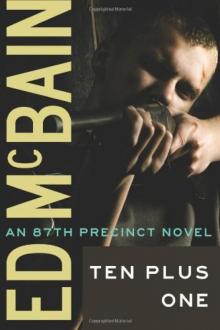 Ten Plus One
Ten Plus One Fat Ollie's Book
Fat Ollie's Book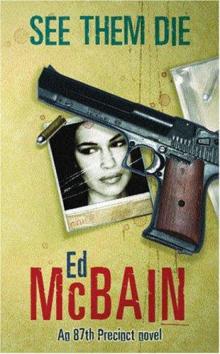 See Them Die
See Them Die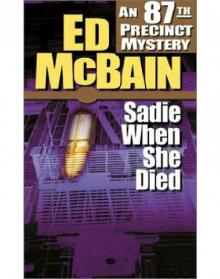 Sadie When She Died
Sadie When She Died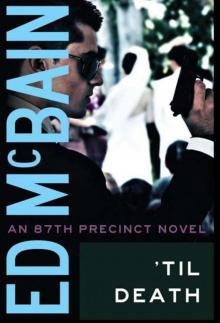 Til Death
Til Death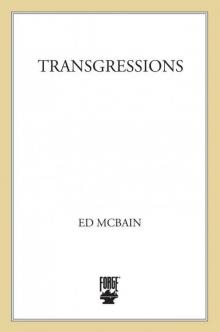 Transgressions Vol. 3: Merely Hate/Walking the Line/Walking Around Money
Transgressions Vol. 3: Merely Hate/Walking the Line/Walking Around Money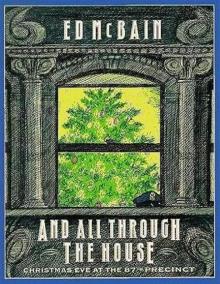 And All Through the House
And All Through the House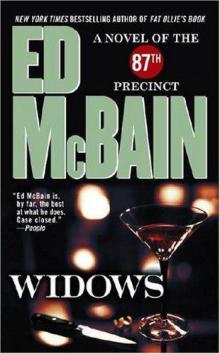 Widows
Widows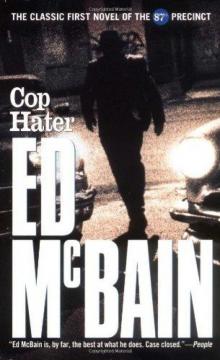 Cop Hater
Cop Hater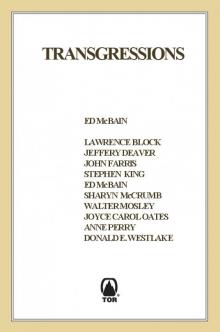 Transgressions
Transgressions